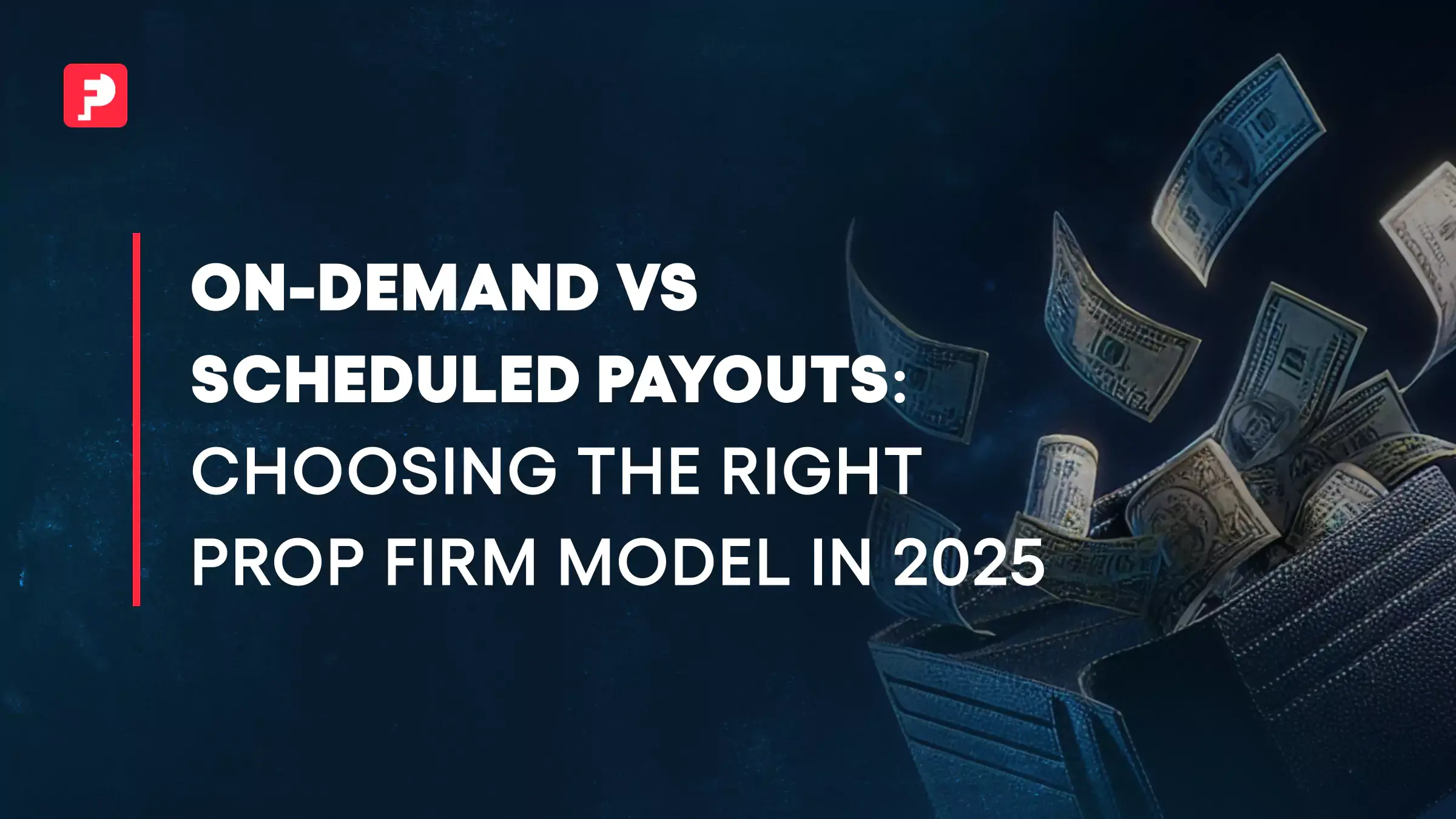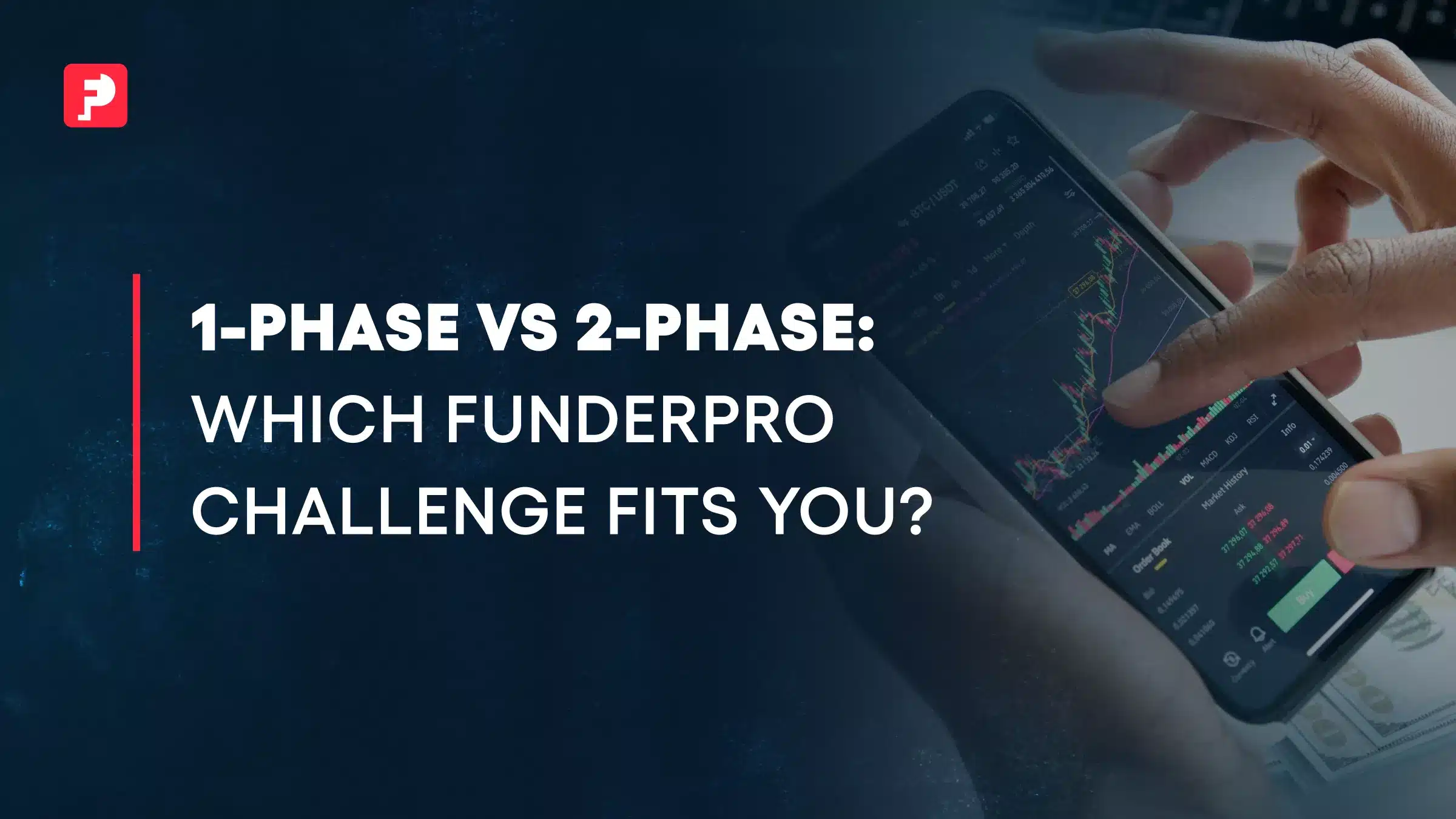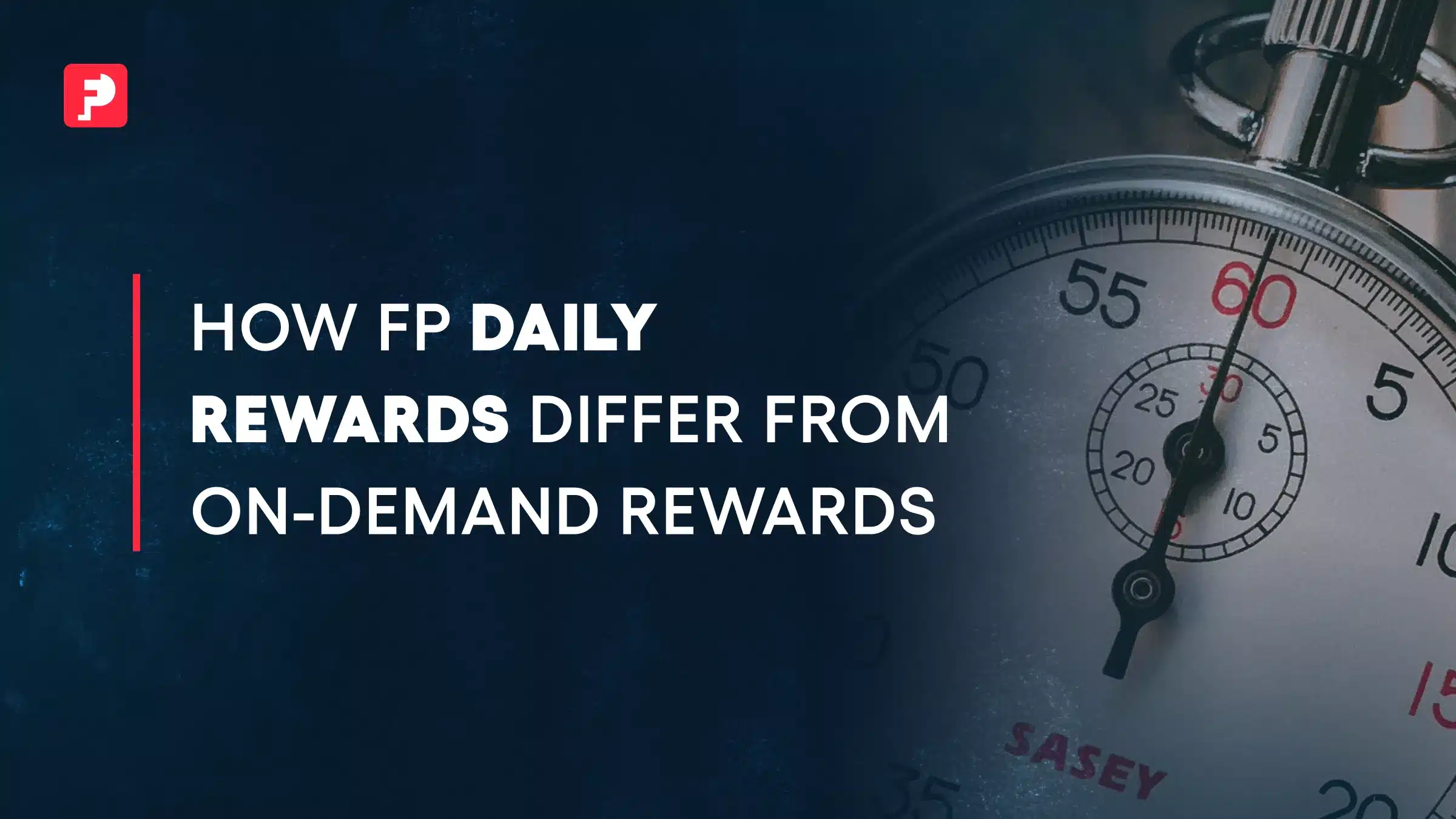
On Demand vs Scheduled Payouts: Choosing the Right Prop Firm Model
Key Takeaway
- On demand payouts provide faster access to profits, essential for traders who need liquidity and reinvestment opportunities.
- Scheduled payouts enforce structure and discipline, making them valuable for long-term planners.
- The right prop firm payout model depends on whether you value agility or stability.
Introduction
When traders evaluate prop firms, payout models are not a small detail. Alongside trading rules and scaling opportunities, payout timing determines how quickly you can access profits, manage cashflow, and build confidence.
At FunderPro, payouts are called Rewards because they represent trading achievement rather than just administration. For clarity, we will use the term “payouts” since it is the industry standard.
This article compares the two primary prop firm payout models, scheduled and on demand. We will examine their benefits, limitations, and impact on growth, and explain how FunderPro combines both through its Rewards system.
Scheduled Payouts: Structure and Planning
A scheduled payout releases profits at fixed intervals, usually every 14 or 30 days. This is still the most common model in the industry.
Benefits of Scheduled Payouts
- Predictable timing: Regular dates make it easier to budget and plan.
- Discipline: Traders are less likely to withdraw impulsively, protecting long-term growth.
- Fit for swing strategies: Longer term traders benefit from consistency that matches their style.
Trade-offs
- Delayed liquidity: Profits sit idle until the next cycle, limiting reinvestment opportunities.
- Missed momentum: A trader who earns $3,000 in week one cannot access it for weeks, losing potential to scale faster.
- One size fits all: A fixed cycle assumes every trader benefits from the same rhythm.
On Demand Payouts: Flexibility and Liquidity
An on-demand payout allows traders to request profits as soon as requirements are met, without waiting for a scheduled date.
Benefits of On Demand Payouts
- Faster liquidity: Funds can be used immediately to cover resets, scale into new accounts, or manage personal cashflow.
- Psychological boost: Quick access reinforces positive habits and reduces stress for active traders.
- Fit for short term styles: Scalpers and intraday traders benefit from being able to “bank” wins quickly.
Trade-offs
- Minimums may apply: Some firms set withdrawal thresholds.
- Processing windows: On demand means you can request at any time, but transfers still take one to three business days.
- Risk of over-withdrawing: Easy access can reduce the compounding effect if not managed carefully.
Why Payout Models Matter in Prop Trading
Payout models affect much more than timing. They shape how traders grow, think, and manage risk.
Cashflow as a Growth Driver
Access to profits determines whether you can scale quickly. Imagine two traders each earning $5,000 in three weeks:
- Trader A (Scheduled Payouts) waits 30 days, unable to scale or reset during that time.
- Trader B (On Demand Payouts) withdraws after week one, covers a reset, and compounds exposure by week three.
Both are profitable, but one accelerates growth through liquidity.
Payouts Shape Psychology
Scheduled payouts enforce patience. A swing trader holding positions for weeks benefits from this discipline. By contrast, scalpers value immediacy — being able to withdraw daily reduces stress and encourages consistent execution.
Firm-Side Reasoning
Firms design payout structures for practical reasons:
- Liquidity management: Scheduled cycles help balance outflows.
- Fraud checks: Processing time allows firms to review suspicious activity.
- Operational efficiency: Bulk transfers cost less and reduce errors.
This is why many firms still use 14-day cycles in 2025, even as demand for flexibility grows.
Scaling and Competition
Liquidity drives growth. Traders who can recycle profits quickly scale faster, while firms use payout speed as a competitive edge. “Same day withdrawals” may sound attractive but often come with thresholds or fees to offset risk.
For more insight into mindset, see Why Psychology Matters in Prop Trading.
Which Model Suits Which Trader
- On demand payouts: Best for scalpers, intraday traders, and those with smaller capital who rely on recycling profits quickly.
- Scheduled payouts: Best for swing and position traders, or those who prefer consistency and structured income cycles.
At FunderPro, the Rewards system blends both approaches. Traders have access to flexibility, but within a framework that protects fairness and sustainability.
📺 Daily Payouts Netted Him $16,780 Last Month — Meet Mike, one of our accomplished funded traders.
Watch on YouTube.
In this exclusive interview, he delves into the trading strategy that netted him an impressive $16,780 just last month. Join us as we explore the mindset, psychology, and valuable advice he offers to beginners.
Also see Prop Trading Pass Rates in 2025: What the Data Really Shows for insights on how payout models interact with trader performance.
Key Questions Before You Join a Prop Firm
Before you choose a firm, ask:
- How soon is the first payout available?
- What payment methods are offered — bank transfer, crypto, or payment processors?
- Are there fees or minimum thresholds?
- How often can you withdraw after the first payout?
- Can payout models be changed later if your strategy evolves?
Conclusion
Payout models are more than administration. They shape your psychology, determine how you use profits, and affect how fast you scale.
- Choose on demand payouts if you value agility and liquidity.
- Choose scheduled payouts if you value predictability and structure.
- Or choose a firm that offers a balance of both.
FunderPro’s Rewards system is designed to provide traders with fair, flexible, and transparent access to profits — supporting growth without compromising discipline.
👉 Learn more at the FunderPro Blog and see how Rewards can enhance your trading journey.
Trader’s FAQs
On demand payouts, where requests can be made as soon as profit requirements are met.
Not always. Most firms process withdrawals in one to three business days.
Because they encourage structure, reduce impulsive withdrawals, and support long term planning.
Rarely. Most firms lock you into one model at signup.
Yes. Faster payouts allow quicker reinvestment, but structured payouts protect against reckless compounding.
Yes. A published roadmap allows consistent traders to scale responsibly.



